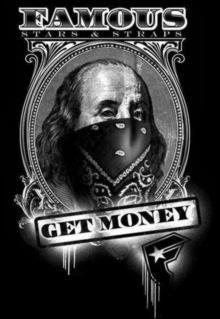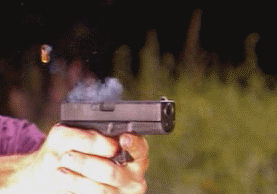[Photos by JUSTIN ROMAN]
TEXT BY JEFF DEENEY The twisting network of back streets between the 5000 blocks of Westminster and Haverford Avenues in West Philly includes Hoopes, Ogden, Parrish, Funston, Reno and Farston; here you’ll find some of the city’s bleakest sights. Abandoned houses that are practically falling down and have been converted to drug establishments line each of these streets. At the heart of the neighborhood is dreary, mostly concrete park with decaying and graffiti-covered basketball courts called, “The Pit.” This is  not a place to come joy riding: Last year there were three homicides, eight shootings and countless more assaults perpetrated in this small square of land. Accordingly, we were apprehensive to find a thick crowd of young hustlers gathered around the memorial for Raphael “Ray Ray” Richburg on the corner of 51st and Hoopes streets when we arrived to photograph it on a warm Saturday afternoon.
not a place to come joy riding: Last year there were three homicides, eight shootings and countless more assaults perpetrated in this small square of land. Accordingly, we were apprehensive to find a thick crowd of young hustlers gathered around the memorial for Raphael “Ray Ray” Richburg on the corner of 51st and Hoopes streets when we arrived to photograph it on a warm Saturday afternoon.
*
Ray Ray was gunned down in a double shooting over Easter weekend; the Inquirer reported that he and the other victim, 38-year-old James Lane, were involved in a gun battle that left them both dead. This was the first time in writing this series that the memorialized victim’s friends were on the scene when we pulled up. We didn’t anticipate a warm welcome from this crew of corner boys inhoodies , patchy scruff beards and braids, but figured it was worth asking if they would talk to us about their friend. Once they saw us approaching, the heads-up call rang out downHoopes Street, warning that strange eyes were watching. Each of the kids stiffened, faces hardening as we got closer. They saw the camera and notepad and anticipated what they were about to be asked.
“Nah,” a boy in ahoodie said waving his hands palm out in front of him, “We don’t want none of that.”
“I’m doing a story on street memorials. Can I talk to you about your friend?”
“We don’t need no stories, man, nah.” There was creeping hostility in his voice and I decided it was unwise to press any further. We could come back for photographs some other day.
“Yo, y’all don’t come out here unless something bad happen, anyway,” he continued as I turned to leave. There was real resentment in his voice; he sounded pained and aggrieved by my presence. The boy’s confidence grew the further we got from him and he shouted profanity and mockery at my back as I got into my car.
There was real resentment in his voice; he sounded pained and aggrieved by my presence. The boy’s confidence grew the further we got from him and he shouted profanity and mockery at my back as I got into my car.
The following week we returned to find the corner empty, the block quiet. We shot the memorial –which consists of white teddy bears holding red hearts, red teddy bears and votive candles in red wax — without incident and left. The plywood covering the doors and windows of the abandoned house upon whose stoop the memorial sits have been painted red since the Department of Licenses and Inspections nailed a “No Trespassing” sign on them God-knows how long ago. Like the other recent memorial at the Norris Apartments that had red bandannas affixed to it and coded Bloods graffiti nearby, there was no mention in the news about a gang connection to the murder. There was also no indication that the Police Department is investigating the murders as gang related homicides. Just yesterday Chief Inspector of Detectives William Blackburn told the Inquirer
that the primary motivator for gun violence in the city was “arguments,” though, he went on to admit, “I’m not a sociologist.”
A search of MySpace turned up pictures of Ray Ray, who also went by “Gib” — he fancied black and red Chicago Bulls logos and black and red patent leather AirJordans. He wore the same style cornrow braids as his friends on Hoopes Street and pricey True Religion designer denim. It’s clear that Ray Ray liked his liquor, as evidenced by the number of empty bottles stacked in front of his memorial and MySpace pictures of him boastfully waving pints of Hennesey and fifths of Bacardi.
One of Ray Ray’s friends on MySpace has a page adorned in gang signifiers that pay homage to the Bloods-affiliated rapper, The Game. The same profile has a picture of the whole Hoopes Street crew standing on the porch overlooking the memorial waving liquor bottles and middle fingers in the air. Another MySpace friend of Ray Ray’s, the West Philly rapper Rell Dott, has a picture of Ray Ray on his page with the simple eulogy, “RIP My nigga” underneath. On the cover of his self-produced album, “The Cookbook,” Rell Dott wears a red Affliction t-shirt; in other pictures he dons a red hoodie and Phillies-cap combination. Rell Dott also has a picture on his page where he’s not wearing red; it’s a menacing portrait of a gangster about to take care of business in which he wears a blackhoodie, black Dickies and black knit cap and sits on a bed laden with handguns, automatic weapons and what appears to be a black Kevlar vest. The inscription under this picture reads, “we ridin hard.”
 It’s safe to say that the motivations behind gun violence perpetrated by the Hoopes Street set go beyond interpersonal disputes.
It’s safe to say that the motivations behind gun violence perpetrated by the Hoopes Street set go beyond interpersonal disputes.
As for Ray Ray, he was a precocious young criminal. He racked up no less than four separate criminal cases in 2005; he had an assortment drug and gun charges against him, including altering or obliterating the serial number on an unlicensed firearm. Found guilty on drug and conspiracy charges later that year, he was given 15 months’ probation, which he promptly violated with another drug charge in early 2006. His is a portrait of a reckless young man on a collision course with oblivion, moving at breakneck speed, fueling his rush towards an early demise with booze, fast money, illegal guns and gang affiliations. I suppose you could either say he died too soon at the age of 21, or that it’s a miracle that he lived as long as he did.
 ABOUT THE AUTHOR: Jeff Deeney is a freelance writer whose work has appeared in PW, City Paper and the Inquirer. He focuses on issues of urban poverty and drug culture. He is currently working on a book about life in the crossfire of poverty, drugs, guns, and the bureaucracies designed to remedy them, all of which informed his experiences as social workers in some of the city’s most dire and depleted neighborhoods.
ABOUT THE AUTHOR: Jeff Deeney is a freelance writer whose work has appeared in PW, City Paper and the Inquirer. He focuses on issues of urban poverty and drug culture. He is currently working on a book about life in the crossfire of poverty, drugs, guns, and the bureaucracies designed to remedy them, all of which informed his experiences as social workers in some of the city’s most dire and depleted neighborhoods.
